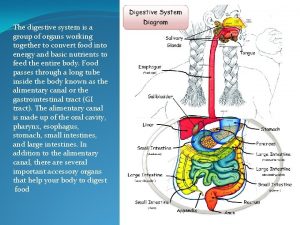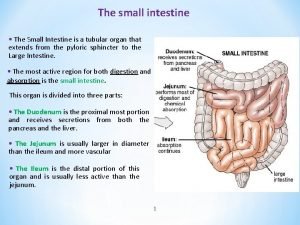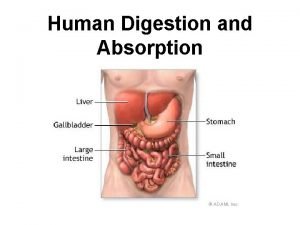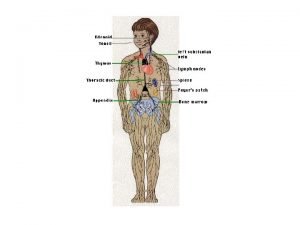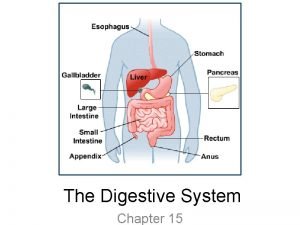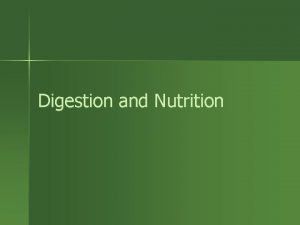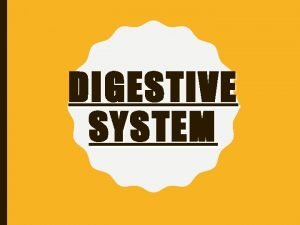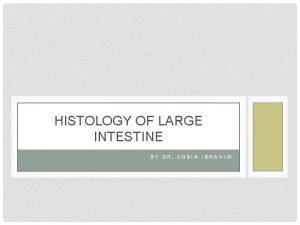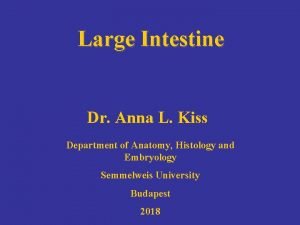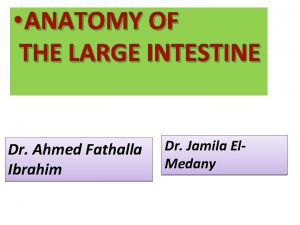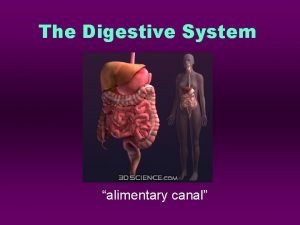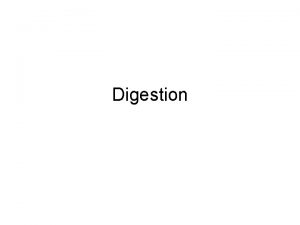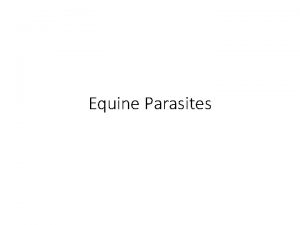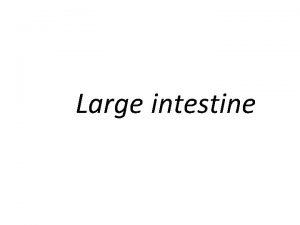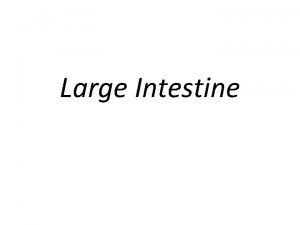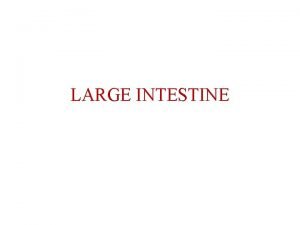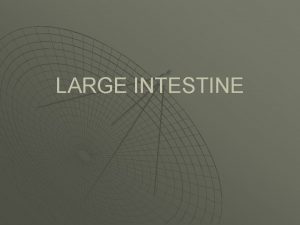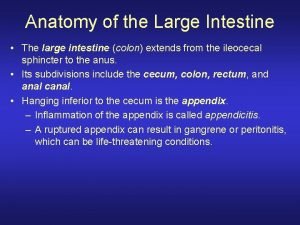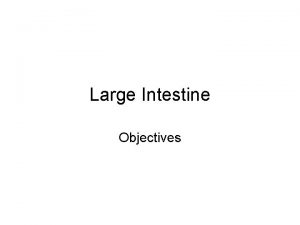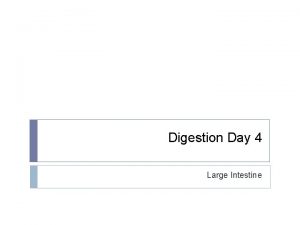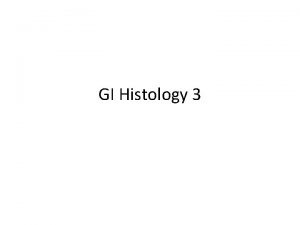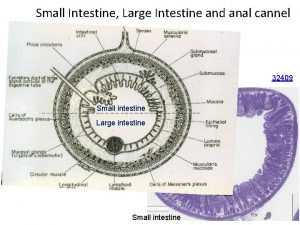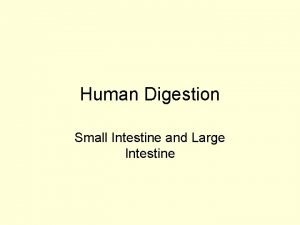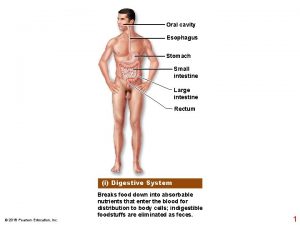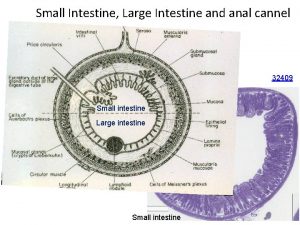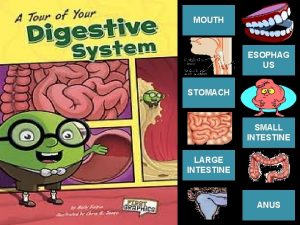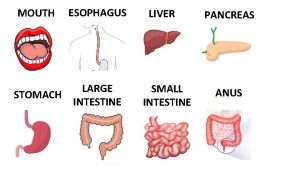LARGE INTESTINE Extends from the distal end of


















- Slides: 18

LARGE INTESTINE

Extends from the distal end of the ileum to the anus. Consists of caecum, ascending colon, transverse colon, descending colon, sigmoid colon, rectum and anal canal. Absorbs fluids and salts from the gut contents.

HISTOLOG Y

U can see numerous cresentric mucosal folds. Absence of villi

Large number of Goblet cells Enteroendocrine Columnarcells with brush Longitudinal – aggregatesborder. as longitudinal bands taenia coli. Three thick longitudinal bands of Stem cells. taenia coli. Tenia mesocolica, tenia libera & tenia omentalis Tubular intestinal glands / Crypts of Lieberkuhn

As the taenia are shorter in length the intestine here is sacculated called haustrations. appendices epiploicae pouch like processes filled with

Columnar cells with striated border absorb excess water and electrolytes. It also secrets Ig A antibodies. Goblet cell number increases caudally down the intestine. They secrete mucus that lubricates and facilitates the passage of the semisolid intestinal contents.

• Enteroendocrine cells/ enterochromaffin cells/argentaffin cells: – They produce amines like 5 -HT. – These cells are positive to chromaffin reaction (with potassium dichromate) and hence called enterochromaffin cells.

Microscopic view


HISTOLOGY OF APPENDIX

The longitudinal muscle coat is uniformly thick and has no taenia coli.


The lamina propria and submucosa is full of lymphoid nodules. The lymphoid tissue is absent at birth and reaches a maximum at ten years and then progressively decreases with age. Mucous membrane similar to large intestine: simple columnar with large number of Muscularis mucosa is not well developed and missing in goblet cells. some areas.

Lamina propria consists of much more lymphatic tissue extending onto submucosa and has few intestinal glands or Crypts of Lieberkuhn.

Summary of GIT: § Proximal to distal 1. Increase in lymphocytes. 2. Increase in Goblet cells.

IDENTIFICATION POINTS • Large intestine 1. Presence of numerous goblet cells in the epithelium 2. Outer longitidinal layer of smooth muscle if thickened to form taenia coli

IDENTIFICATION POINTS • Vermiform Appendix 1. lymphoid follicles in the lamina propria extending in to submucosa. 2. Few intestinal glands.
 Esophagus stomach small intestine large intestine
Esophagus stomach small intestine large intestine Small intestine extends from
Small intestine extends from Copyright
Copyright Lymphoid tissue in colon
Lymphoid tissue in colon Small intestine structure
Small intestine structure Functions of the large intestine
Functions of the large intestine Large intestine
Large intestine J shaped muscular bag
J shaped muscular bag Taenia histology
Taenia histology Regions of large intestine
Regions of large intestine Part of large intestine
Part of large intestine Lanz point
Lanz point Right colic flexure
Right colic flexure Large intestine function in digestive system
Large intestine function in digestive system Digestive system enzymes chart
Digestive system enzymes chart Equine large intestine
Equine large intestine Appendix venous drainage
Appendix venous drainage Large intestine function in digestive system
Large intestine function in digestive system Large intestine
Large intestine
